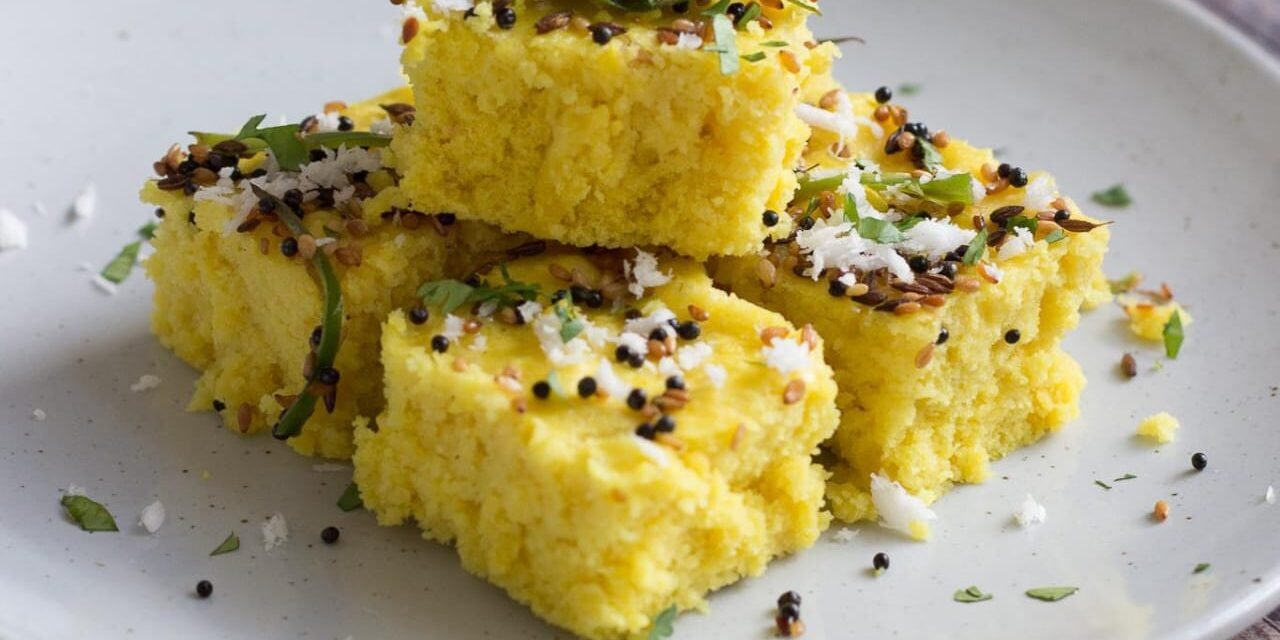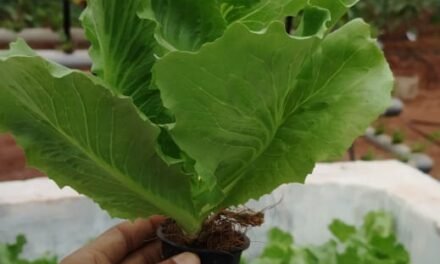Introduction:
Approximately 70-80 of Indians suffering from protein deficiency. Khaman is savory food snack from Gujrat, prepared from chickpea dal (dicotyledons) and serve as important source of protein, calories and Vitamins. While there are various brands in the indian market that sell Instant Khaman/ Dhokla premix, these products are not fermented and contain excessive leavening agents. I will prepare it using sprouting and fermentation method to enhance its nutritional value by breaking down complex macronutrients into simpler, more digestible forms.
Importance of Germination/sprouting and Fermentation:
Mainly four method are used to enhancing the nutritional value of food, viz., Germination, Food fermentation, Food synergy ( Combination of food products), Food Fortification.
Cereals and legumes are outstanding sources of macronutrients, micronutrients, phytochemicals, as well as antinutritional factors. These components present a complex system enabling interactions with different components within food matrices. The interactions of nutrients with antinutritional factors are the main factor hindering nutrients release. Trypsin inhibitors and phytates inherent in cereals and legumes reduce protein digestibility and mineral release, respectively. Interaction of phytates and phenolic compounds with minerals is significant in cereals and legumes. Fermentation and germination are commonly used to disrupt these interactions and make nutrients and phytochemicals free and accessible to digestive enzymes. Traditional fermentation and germination processes as a means to address myriad interactions through activation of endogenous enzymes such as α‐amylase, pullulanase, phytase, and other glucosidases. These enzymes degrade antinutritional factors and break down complex macronutrients to their simple and more digestible forms.
Difference between Khaman and Dhokla:
Many of people can’t differentiate between Khaman and Dhokla. These both are same in texture and appearance. But difference is khaman is prepared with chickpea dal and Dhokla is Prepared with chickpea and rice flour.
| Dhokla | Khaman |
| Chickpea dal and rice ↓ Separately Wash and soak ( 5-10Hrs) ↓ Separately Fine grind in mortar ↓ Combine slurries into thick batter ↓ Mix well ↓ Add salt for seasoning ( approx. 1% w/v) ↓ Incubate over-night in warm place (30-32 Degree celsius) ↓ Steam in a greased pie tin , 10 min ↓ Ready for consumption | Chickpea dal ↓ Wash and soak in water for 5-10 hrs ↓ Coarse grind in mortar ↓ Add salt for seasoning ( approx. 1%w/v) ↓ incubate over-night in warm place (30-32 degree celcius) ↓ Steam in a greased pie tin ,10 min ↓ Ready for consumption. |
Mode Of action:
Preparation of chick pea dal:
Chickpea
↓
Soaking
(12 hr in water)
↓
Germination/ sprouting
(kept in cotton cloth)
↓
Drying
↓
Milling
↓
chickpea dal
About Germination and fermentation:
Cereals and legumes are outstanding sources of macronutrients, micronutrients, phytochemicals, as well as antinutritional factors. These components present a complex system enabling interactions with different components within food matrices. The interactions result in insoluble complexes with reduced bioaccessibility of nutrients through binding and entrapment thereby limiting their release from food matrices. The interactions of nutrients with antinutritional factors are the main factor hindering nutrients release. Trypsin inhibitors and phytates inherent in cereals and legumes reduce protein digestibility and mineral release, respectively. Interaction of phytates and phenolic compounds with minerals is significant in cereals and legumes. Fermentation and germination are commonly used to disrupt these interactions and make nutrients and phytochemicals free and accessible to digestive enzymes. Traditional fermentation and germination processes as a means to address myriad interactions through activation of endogenous enzymes such as α‐amylase, pullulanase, phytase, and other glucosidases. These enzymes degrade antinutritional factors and break down complex macronutrients to their simple and more digestible forms.
As discussed with Mr. Dixit sir , I started studied on fermentation of Khaman batter. I decided to check the acidity of khaman dhokla at various time and temperature.
22 -23 June 23
Fermentation at 45 o C
- Soaking
- At 7 PM-
- chickpea dal – 100 gm
- Water – 200 gm
- At 7 PM-
- Draining-
- Weight of soaked water- 201 gm
- Weight of drained water- 92 gm
- Grinding-
- Ground coursely
- Addition of water- 100 gm
- Prepared batter – 300 gm
- Fermentation –
- At 45 o C at 7.30 am
- Studied by titrable acidity
| Time interval | Burette reading | Acidity in K2Co3/ 100 gm | Acidity in mol | pH |
| 5 hrs | 4.7 | 1.29 | 0.00047 | 6.22 |
23-24 June 23
Fermentation at 45 o C
- Soaking
- At 7 PM-
- chickpea dal – 50 gm
- Water – 150 gm
- At 7 PM-
- Draining-
- Weight of soaked dal- 101gm
- Weight of drained water- 95 gm
- Grinding-
- Ground coursly
- Addition of water- 50 gm
- Prepared batter – 147 gm
- Fermentation –
- At 45 o C at 11.30 am
- Studied by titrable acidity.
| Time Internal | Burette reading | Acidity in K2CO3 / 100 gm | Acidity in mol | pH |
| Initial | 2.1 | 0.57 | 0.00021 | 7.66 |
| 1/2 hr | 2.3 | 0.63 | 0.00023 | 7.57 |
| 1 hr | 2.5 | 0.69 | 0.00025 | 7.49 |
| 1 & 1/2 hr | 2.7 | 0.74 | 0.00027 | 7.37 |
| 2hr | 2.9 | 0.80 | 0.00029 | 7.24 |
| 2 & 1/2 hr | 3.2 | 0.88 | 0.00032 | 7.15 |
| 3 hr | 3.6 | 0.99 | 0.00036 | 6.81 |
| 3 &1/2 hr | 3.7 | 1.02 | 0.00037 | 6.78 |
| 4 hr | 4 | 1.10 | 0.00040 | 6.60 |
24 – 25 June 23
Fermentation at 40 o C
- Soaking
- At 7 PM-
- chickpea dal – 100 gm
- Water – 200 gm
- At 7 PM-
- Draining-
- Weight of soaked dal- 204 gm
- Weight of drained water- 91 gm
- Grinding-
- Ground coursly
- Addition of water- 120 gm
- Prepared batter – 308 gm
- Fermentation –
- At 40 o C at 11.30 am
- Studied by titrable acidity.
| Time Internal | Burette reading | Acidity in K2CO3 / 100 gm | Acidity in mol | pH |
| Initial | 1.9 | 0.52 | 0.00019 | 7.84 |
| 1/2 hr | 2.2 | 0.60 | 0.00022 | 7.70 |
| 1 hr | 2.4 | 0.66 | 0.00024 | 7.57 |
| 1 & 1/2 hr | 2.7 | 0.74 | 0.00027 | 7.53 |
| 2hr | 3 | 0.82 | 0.00030 | 7.39 |
| 2 & 1/2 hr | 3.2 | 0.88 | 0.00032 | 7.19 |
| 3 hr | 3.5 | 0.96 | 0.00035 | 7.03 |
| 3 &1/2 hr | 3.7 | 1.02 | 0.00037 | 6.82 |
| 4 hr | 4 | 1.10 | 0.00040 | 6.58 |
| 4 & 1/2 hr | 4.4 | 1.21 | 0.00044 | 6.46 |
| 5 | 4.6 | 1.26 | 0.00046 | 6.44 |
20-21 July 23
Fermentation at 35 o C
- Soaking
- At 7 PM-
- chickpea dal – 90 gm
- Water – 180 gm
- At 7 PM-
- Draining-
- Weight of soaked dal- 181 gm
- Weight of drained water- 83 gm
- Grinding-
- Ground coursly
- Addition of water- 90 gm
- Prepared batter – 277 gm
- Fermentation –
- At 35 o C at 11.30 am
- Studied by titrable acidity.
| Time Internal | Burette reading | Acidity in K2CO3 / 100 gm | Acidity in mol |
| Initial | 2.1 | 0.57 | 0.00021 |
| 1/2 hr | 2.3 | 0.63 | 0.00023 |
| 1 hr | 2.5 | 0.69 | 0.00025 |
| 1 & 1/2 hr | 2.7 | 0.74 | 0.00027 |
| 2hr | 2.9 | 0.80 | 0.00029 |
| 2 & 1/2 hr | 3.0 | 0.82 | 0.00030 |
| 3 hr | 3.3 | 0.91 | 0.00033 |
| 3 &1/2 hr | 3.5 | 0.96 | 0.00035 |
| 4 hr | 3.7 | 1.02 | 0.00037 |
| 4 & 1/2 hr | 3.9 | 1.07 | 0.00039 |
| 5 hr | 4.3 | 1.18 | 0.00043 |
| 5 & 1/2 hr | 4.6 | 1.26 | 0.00046 |
| 6 hr | 4.8 | 1.32 | 0.00048 |
1 -2 Aug 2024
Fermentation at 30 o C
Fermentation
| Time Internal | Burette reading | Acidity in K2CO3 / 100 gm | Acidity in mol |
| Initial | 1.8 | 0.49 | 0.00018 |
| 1hr | 2.1 | 0.57 | 0.00021 |
| 2 hr | 2.3 | 0.63 | 0.00023 |
| 3 hr | 2.5 | 0.69 | 0.00025 |
| 4 hr | 2.7 | 0.74 | 0.00027 |
| 5 hr | 2.9 | 0.80 | 0.00029 |
| 6 hr | 3.5 | 0.96 | 0.00035 |
As discussed with Mr. Dixit sir, I decided to take next trials with fermentation at 40 degree celcius for 2.5, 3, 3.5 hrs
9 – 10 August 2024
Soaking:
Chickpea dal- 100 gm
Water- 200 gm
Draining:
Weight of soaked dal- 200 gm
Weight of drained water – 85 gm
Grinding :
Addition of water – 100 gm
Weight of prepared batter- 297 gm
divided into 3 groups- a) 99 gm, b) 99 gm, c) 99 gm
Fermentation:
at 40 degree celcius
| sr no. | Time Interval | Burette reading | Acidity in K2CO3 | Acidity in mol |
| 1 | 2.5 hr | 2.9 | 0.80 | 0.00029 |
| 2 | 3 hr | 3.2 | 0.88 | 0.00032 |
| 3 | 3.5 hr | 3.6 | 0.99 | 0.00035 |
Cooking:
salt- 1.5 gm
Turmeric- 1 gm
Baking soda- 1 gm
Steaming time- 20 min
Observation:
From senspory evaluation sample B was best in taste and texture. Sample B is selected for futher study
Future aspect:
- Optimization of baking soda, salt and other ingredients.
- To prepare instant fermented dhokla premix by dehydration.
- To study sensory analysis of prepared dhokla from premix.





